Dodge Dakota Engine Will Not Start (2000-2004)
- The information on this page applies to all 2000 to 2004 Dodge Dakota 3.7l 6-cylinder, 3.9L 6-cylinder, 4.7L 8-cylinder, 5.9-liter V8 engines that won’t start.
An internal combustion engine or any machine that will not start up and begin operating requires some form of troubleshooting so as to determine the possible cause and the action needed to correct the starting problem. Troubleshooting is a systematic approach used to trace and correct faults in a mechanical, fuel or electronic system. Before you can begin to solve any minor or serious problem you must identify the nature of they symptom. A symptom is a sign that can indicate a mechanical condition. In the context of this article, the symptom is “engine will not start”.
That said, an engine that will not start can be further defined into separate categories, for example, the engine cranks but will not start, meaning you can hear the engine turn the crankshaft in order to start the engine but the motor fails to start running. It can also mean the engine will not crank at all. By identifying the exact symptom, it makes it easier to pinpoint the precise cause.
Once you have established the exact symptom, refer to the charts below. The information will guide you in the right direction so that you can save some time and get your engine up and running again.
Engine Will Not Start – 3.7 L, 6-Cylinder
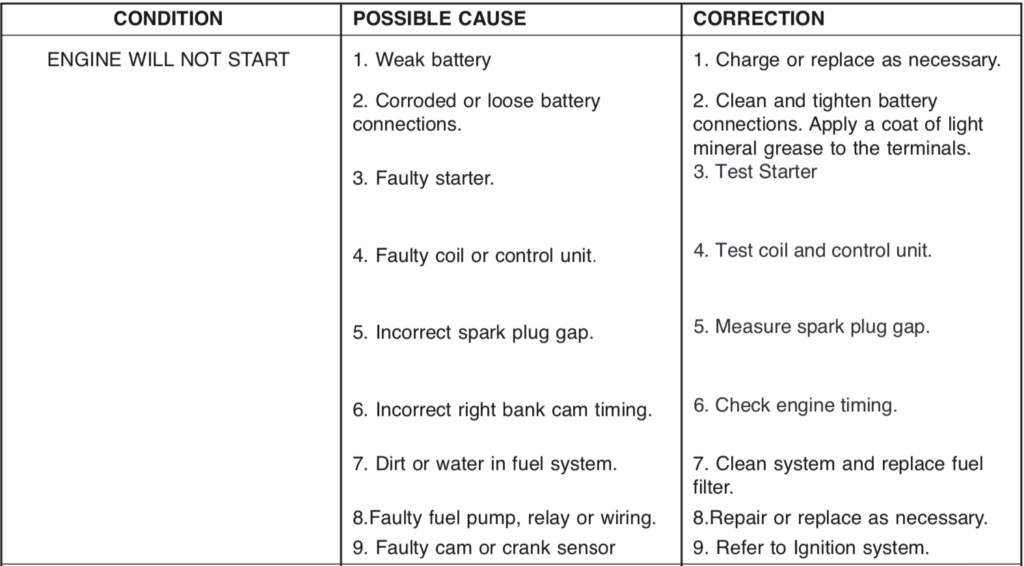
Engine Won’t Crank Or Cranks But Won’t Start – 3.9 L, 6-Cylinder
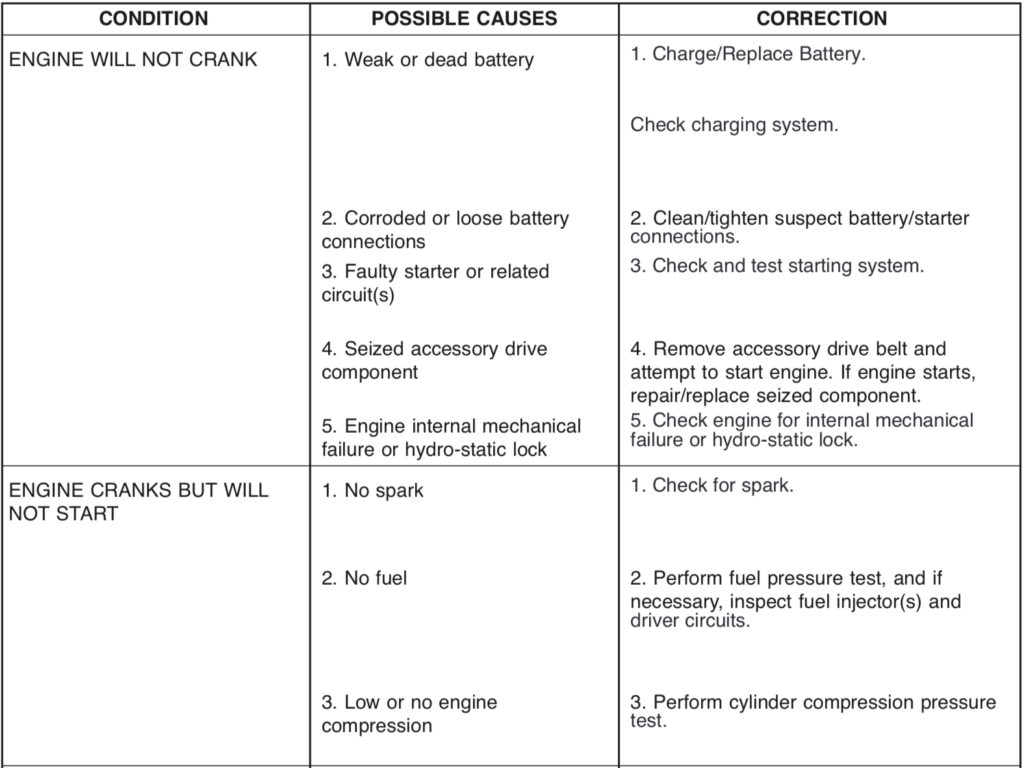
Engine Will Not Start – 4.7 L, 8-Cylinder
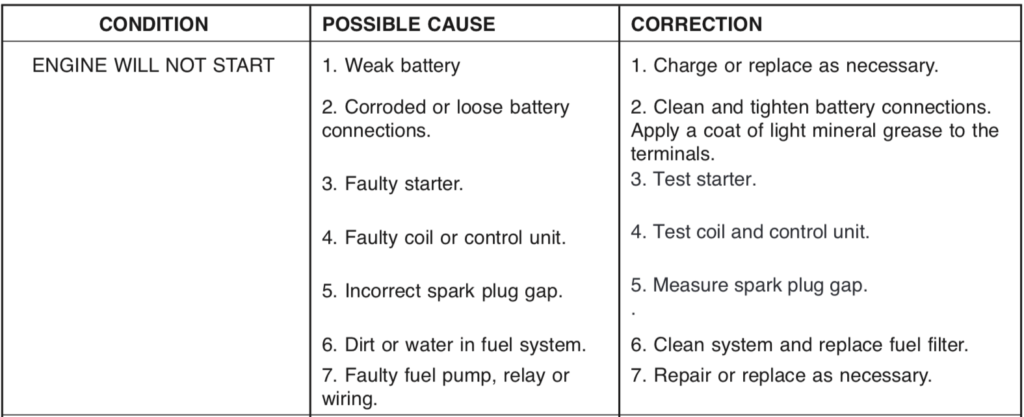
Engine Won’t Crank Or Cranks But Won’t Start – 5.9 L, 8-Cylinder
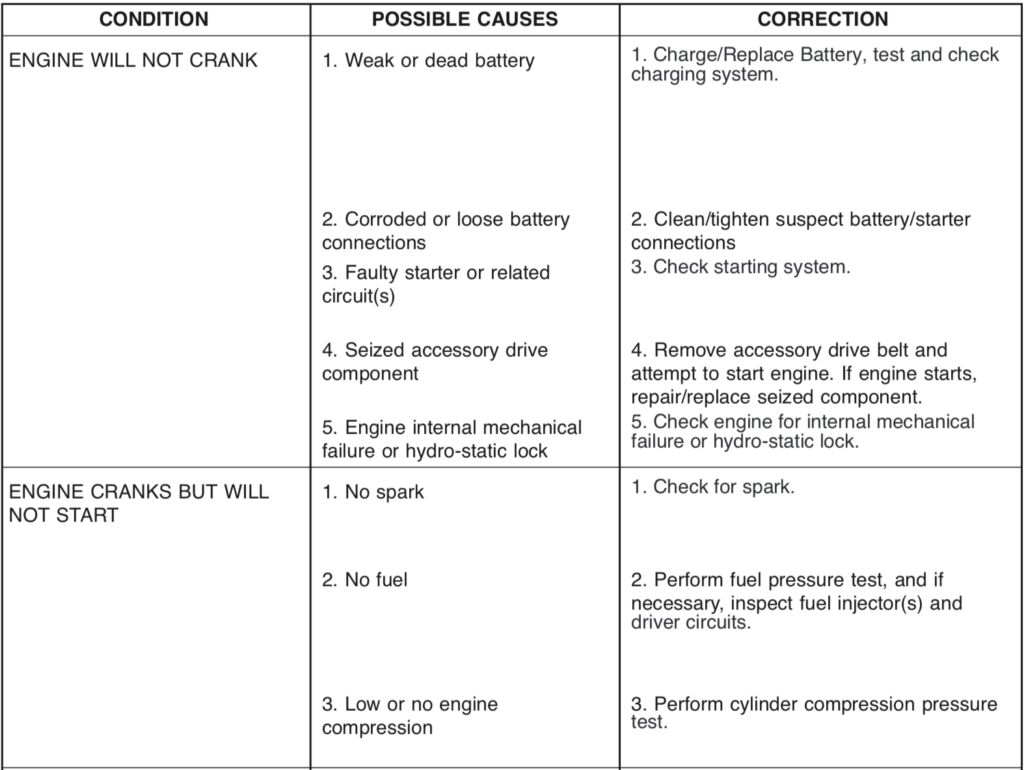
Starting System Inspection
The vehicle’s starting, battery and charging system work in combination with each other, so it’s a good idea to perform a careful examination of all three systems. In fact, before you remove or replace any starting system component, perform the following inspections:
- Battery — Start with a detailed visual inspection of the battery and look for signs of corroded and loose connections or physical damage. Determine the battery state-of-charge and cranking capacity, charge battery if needed. If you do not have the necessary tools to do so, your local auto parts store can do it free of charge.
- Ignition Switch — Check ignition switch. Look for signs of physical damage, corroded wiring harness connections, frayed, burned or loose wires.
- Clutch Pedal Position Switch — If your Dodge Dakota is equipped with a manual transmission be sure to check the clutch pedal position switch for signs of damage, loose wire harness connections or corrosion.
- Neutral/Park Position Switch — If the truck is equipped with an automatic transmission be sure to check the neutral/park position switch for signs of damage, loose wire harness connections or corrosion.
- Starter Relay — Check the starter relay for signs of damage, loose wire harness connections or corrosion.
- Wiring — Check all wire harnesses for damage and repair or replace any wiring if required.
- Starter Motor — Inspect the starter motor for signs of damage, loose connections or faulty or wiring. Inspect connections for corrosion. Your local auto parts store can bench test the starter motor free of charge.
- Starter Solenoid — Inspect the starter solenoid for signs o damage, loose wire harness connection or wire corrosion.
Starter Motor Troubleshooting
We all know what a starter is. It’s an automatic device for starting an internal-combustion engine. On average, a starter motor can last for 90,000-160,000 miles but it’s not entirely uncommon for a starter to fail prematurely. If a starter is bad or malfunctioning it can prevent the engine from turning on. Specifically it can cause all of the symptoms we’ve discussed i.e. engine will not start, engine will not crank or engine cranks but will not start. That’s why I have included this starter troubleshooting chart.
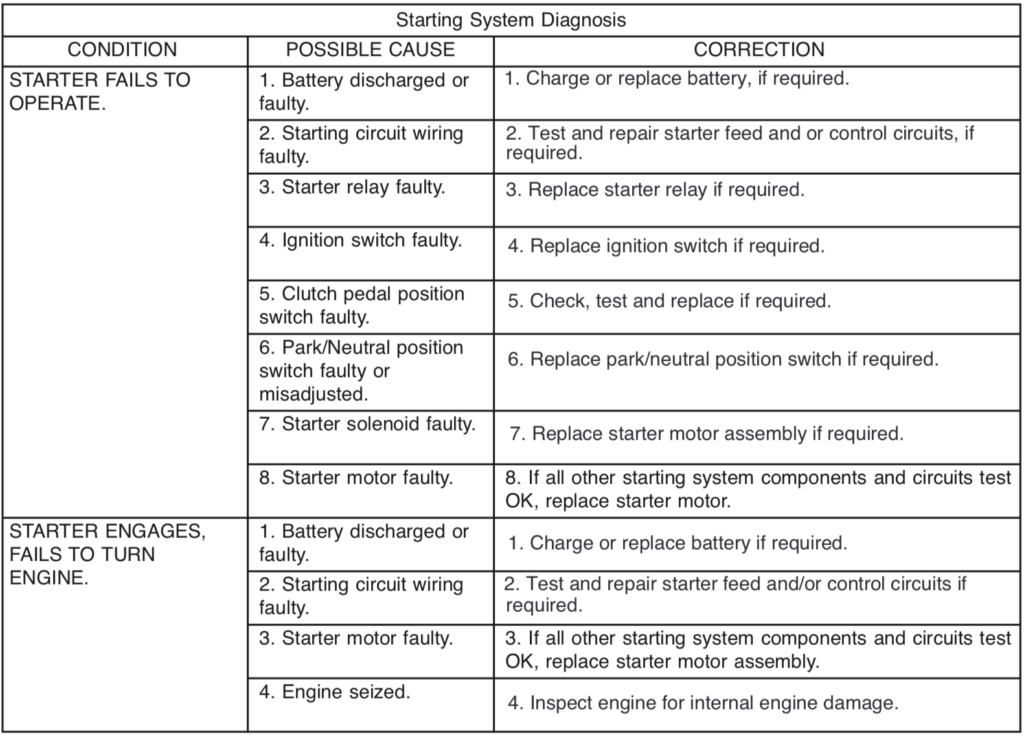
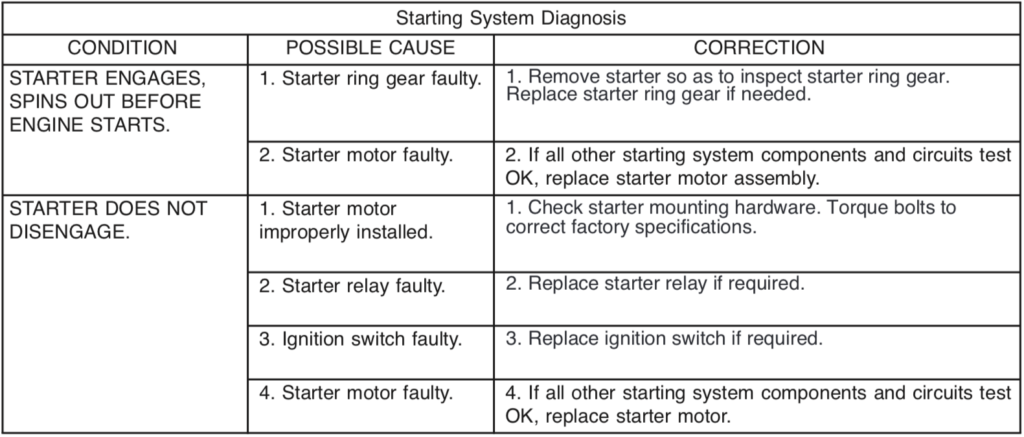
Remember to first observe the symptom so as to determine the possible cause and its solution. Before assuming anything you should ask yourself these questions; does the starter motor engage? Does the starter motor fail to operate? Does the starter motor engage but raise to rotate the engine. Asking yourself these questions can help you identify the possible cause and correction.
Summary
Sure, there could be other reasons for why your Dodge Dakota won’t start. But chances are, the probable cause is listed on this page. If you’ve tried everything listed herein and the truck still doesn’t start, leave a comment in the comment box below. Provided me with details, like what you’ve already tried and the symptoms your truck is experiencing. The more details you can provide me the better chance I can help you.
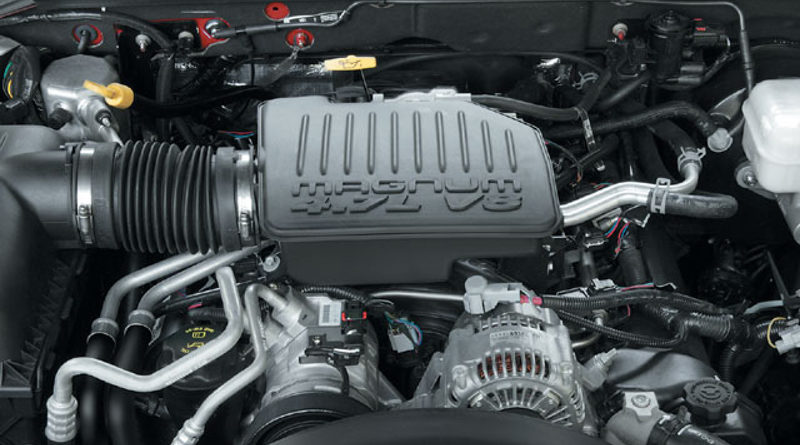
2004 dodge dakota with a 4.7 v8. it just died and won’t start it cranks but no start. It had new heads put on, new cams, timing chains guides and gears. now the gauges won’t come on. any solutions to this problem or where to start looking